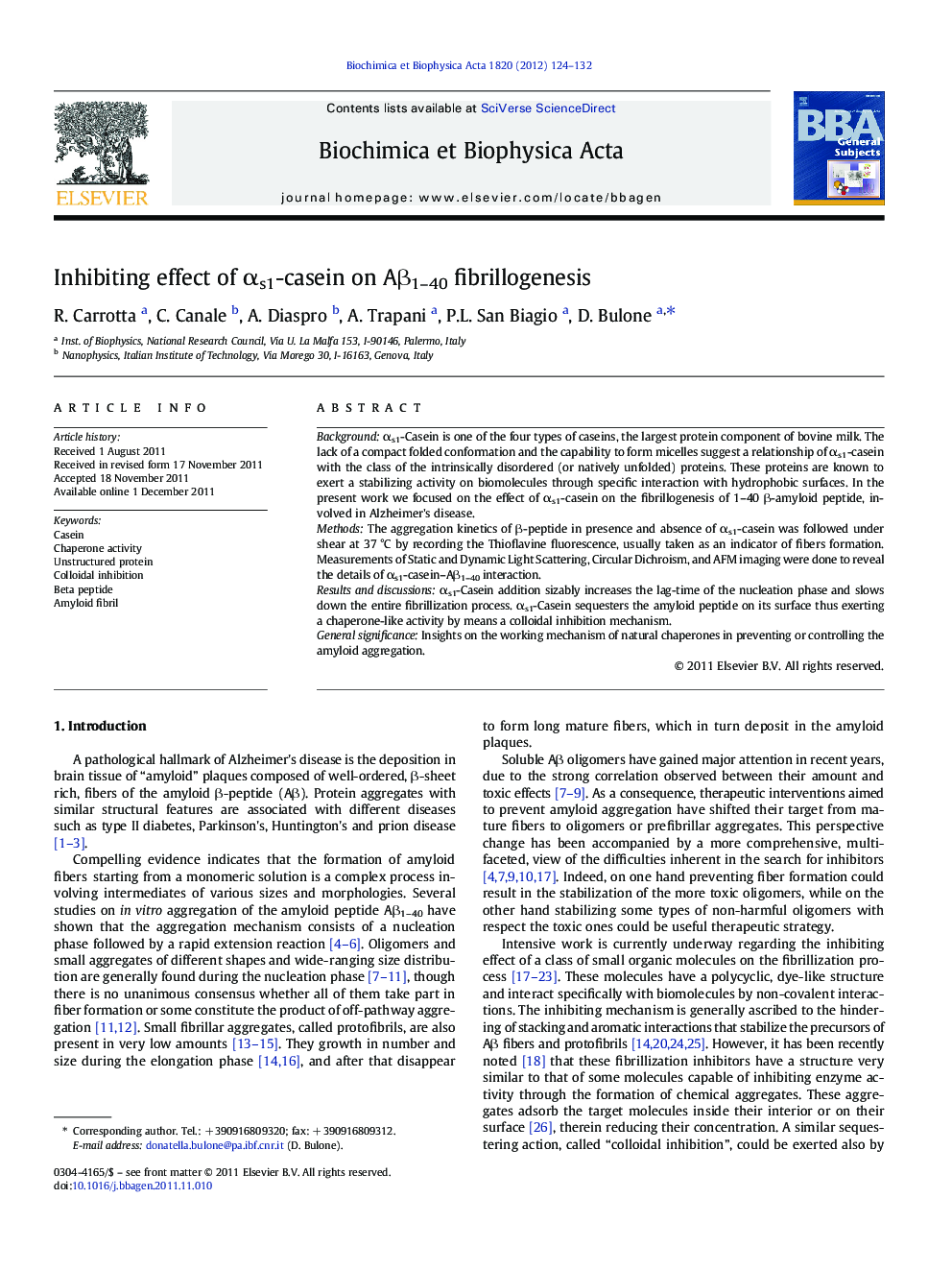| Article ID | Journal | Published Year | Pages | File Type |
|---|---|---|---|---|
| 1947790 | Biochimica et Biophysica Acta (BBA) - General Subjects | 2012 | 9 Pages |
Backgroundαs1-Casein is one of the four types of caseins, the largest protein component of bovine milk. The lack of a compact folded conformation and the capability to form micelles suggest a relationship of αs1-casein with the class of the intrinsically disordered (or natively unfolded) proteins. These proteins are known to exert a stabilizing activity on biomolecules through specific interaction with hydrophobic surfaces. In the present work we focused on the effect of αs1-casein on the fibrillogenesis of 1–40 β-amyloid peptide, involved in Alzheimer's disease.MethodsThe aggregation kinetics of β-peptide in presence and absence of αs1-casein was followed under shear at 37 °C by recording the Thioflavine fluorescence, usually taken as an indicator of fibers formation. Measurements of Static and Dynamic Light Scattering, Circular Dichroism, and AFM imaging were done to reveal the details of αs1-casein–Aβ1–40 interaction.Results and discussionsαs1-Casein addition sizably increases the lag-time of the nucleation phase and slows down the entire fibrillization process. αs1-Casein sequesters the amyloid peptide on its surface thus exerting a chaperone-like activity by means a colloidal inhibition mechanism.General significanceInsights on the working mechanism of natural chaperones in preventing or controlling the amyloid aggregation.
► αs1-Casein, a natively unfolded protein, as molecular chaperone. ► Effect of αs1-casein on amyloid fibrillization. ► αs1-Casein reduces the content of amyloid fibers. ► Amyloid peptide is recruited on casein hydrophobic surface. ► Colloidal inhibition of the fibrillization process.
